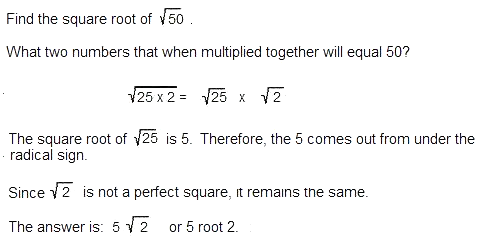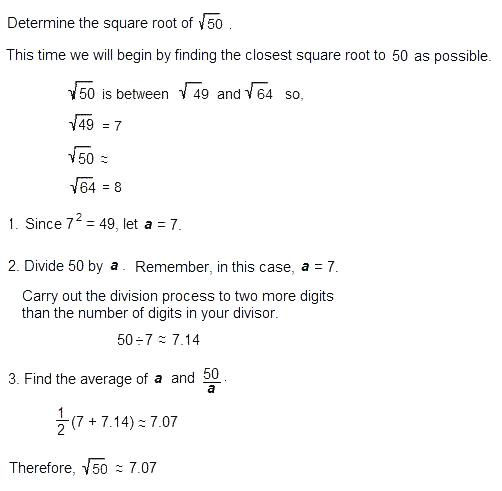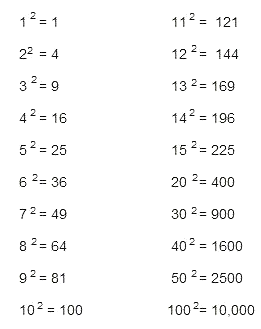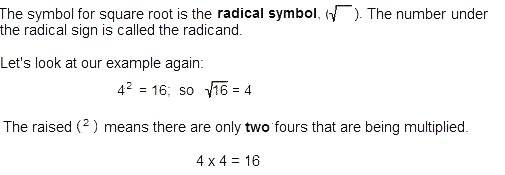Some Helpful Tools
This section will cover the fundamentals of square roots and what numbers are considered perfect squares
Square Roots of Perfect Squares
Perfect squares are created by multiplying a number times itself.
Example 1:
So, it would read: "the square root of 16 is 4."
Let's try some more examples:
The square root of:
To find the square root, ask yourself the following question.
What number can be multiplied times ifself to give the radicand?
Square roots of non-perfect squares are called irrational numbers. Suppose you need to simplify a number that is not a perfect square. Try the following:
- simplify the root
- divide-and-average
- use a calculator
Square Roots of Non-Perfect Squares
Simplify the Root Method
Simplify the root by finding two numbers that when multiplied together will equal the radicand. Keep in mind that one number has to be a perfect square.
Let's look at the following example:
Divide-and-Average Method
Calculation Method
Another way to find the square root of a number is to use a calculator. Most scientific calculators have the radical sign on the keypad.
To find the square root of a number, enter the number. Next, hit the radical sign
(depending on the type of calculator you have). Your answer will appear in the
display window of your calculator.
Try the example below, using a calculator. You should get the following answer.
Perfect Square Roots Chart
The Simplify the Root Method gives the answer in radical form, whereas the Divide-and-Average and Calculator Method give answers in the decimal form.
Since square roots of non-perfect squares are called irrational numbers, their answers are decimals that continue on and on. Keep in mind that these decimals are only an approximation.
For this reason, the answer in the radical form gives a more exact answer.
5 is being multiplied times itself; 5 x 5 = 25
6 is being multiplied times itself; 6 x 6 = 36
7 is being multiplied times itself; 7 x 7 = 49
Math: Square Roots - Tutorial
In this case, 16 is the radicand.




